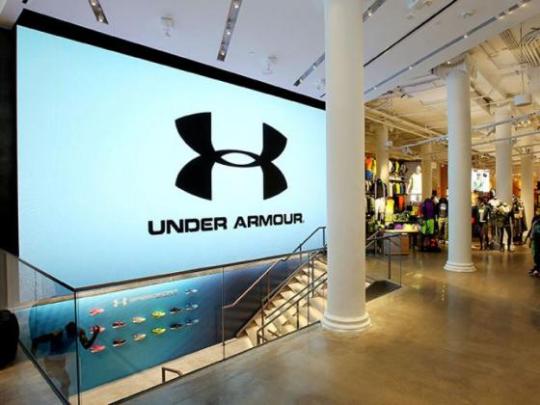
Under Armour CEO and founder Kevin Plank shocked the
retail world when he announced he
would step down from the position to focus on Executive Chairman duties, and
the revelation arguably came at quite an inconvenient time for the athleticwear
company. During a recent earnings call, Under Armour CFO David Bergman
confirmed that the company has been the subject of a federal investigation into
its
accounting practices for more than two years — news that put its otherwise
pedestrian quarterly numbers on the back burner.
The business currently expects 2% full-year sales
growth for 2019, down from an earlier forecast of 3% to 4%, and a
far cry from the era before 2017 when Under Armour had a streak of 26 straight
quarters with 20% revenue increases.
The RTP editors discuss diagnoses Under Armour’s
missteps over the past few years and shares opinions what the company must do
to engineer a turnaround.
Adam Blair, Editor: Under Armour’s recent stock slide
can be attributed to the revelations of an ongoing SEC probe into alleged accounting irregularities, but
the retailer’s weaknesses — not all of which are of its own making — have been
visible for a while. Job cuts announced in September 2018 as part of a $200 million restructuring
plan probably deflated internal morale, and a data breach of its diet and
exercise app affecting 150 million accounts that was revealed in March 2018 certainly didn’t help either. A
deeper problem, however, may be that UA has allowed its brand identity to lose
shape and definition, particularly compared with rivals like Nike and Lululemon.
While UA is known for performance athletic wear, that’s about its products, not
its image. People hear “Nike” and they think “cutting-edge, controversial,
fearless.” They hear Lululemon and think “dedicated to community, in-store
events, yoga pants.” Granted I’m not much of an athleticwear consumer (just
call me Picked Last In Gym Class), but UA doesn’t transmit a clear,
compelling message to me. Incoming CEO Patrik Frisk and his team
should work on that in 2020.
Advertisement
Glenn Taylor, Senior Editor: When Sports
Authority went bankrupt and liquidated its stores three years ago, I
recall there being much discussion about what would happen to a lot of the
brands that sold through there. While DICK’S Sporting Goods became the
top player in the industry by default with this bankruptcy, top
athleticwear/footwear brands had one (major) less option to sell through. I’m
not attributing Under Armour’s fall just to this event, but I think there’s
something to be said about a brand like Nike being able to sell through
its own channels so effectively ($11.8 billion total in its 2019 fiscal
year, up 16% year-over-year) as much as it does through others. Under
Armour hasn’t been able to capitalize on its own stores or its own e-Commerce
site to grow. It’s a major problem when there’s been no growth in these
channels in
any of the last five quarters. People aren’t buying their shoes
either, with footwear revenue dropping 12%. I don’t think this is
necessarily a product quality issue, but it does tell me that people just don’t
associate shoes (and definitely not athleisure) with Under Armour. If the
company can’t find a way to make people care about the products they offer, they
certainly won’t be able to drag customers back into the store, especially given
the in-store experiences provided at Nike and Lululemon.
Bryan Wassel, Associate Editor: I won’t claim to
understand the reason for Under Armour’s current state, but I do have a
starting point: February 2017, when the retailer’s sales slipped below 20%
growth for the first time in 26 quarters. This could have been
a fluke, since it still marks solid growth, but revenue continued to fall until
it stagnated in mid-2018, and things haven’t improved since. Retail
archaeologists need to look at the trends of 2017 to find out what happened: Did
tastes change? Did Under Armour’s messaging fall apart? Did Lululemon or Nike
unleash some secret weapon? Under Armour in particular needs to take a good,
hard look at the company’s actions in 2017 and 2018, figure out where things
went wrong, and work to rebuild the good will and relevance it lost before it’s
too late.







